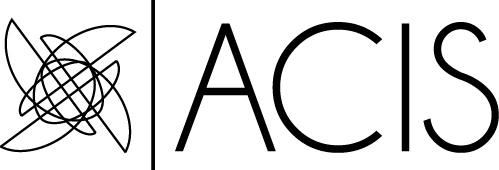
In the midst of the celebration of Yeats’s 150th birthday and a year before the 100th anniversary of the Easter Rising, the 2015 ACIS Conference—“Irish Speculations: Space, Time, History”—asked participants to consider the importance of speculative thinking to the field of Irish Studies. With this in mind, multiple aspects of the conference highlighted alternative community formations and how they related to different aspects of the field.
In the panel “Creating Community and Defining the Body Politic,” Joseph Heininger, Jennifer Doyle-Corn, and Sean Mannion discussed issues surrounding community formation in the poetry of Micheal O’Siadhail and in the fiction of Sebastian Barry, Seamus Deane, Roddy Doyle, and James Stephens. Using theoretical lenses that included animal studies and the biopolitics of Foucault and Agamben, this panel ultimately suggested that each writers’ work forces its readers to confront humanity and come to understand that community depends not only on recognizing and celebrating similarities but also, and perhaps more importantly, on understanding and accepting difference.
Moynagh Sullivan’s keynote, “Mother and Child: Subjective Time, Space, History in Emma Donoghue’s Room,” addressed the ideas of being “locked out” versus being “locked in,” explored the material conditions of creativity, and reimagined the family through violence and incarceration. Focusing on Bracha L. Ettinger’s concept of the “matrixial,” Sullivan argued that the room in which Ma and Jack are held transforms into a shared border space in which magic occurs. More specifically, her explanation of objects that appear, disappear, and transform, as well as of doors that become avenues to various alternate spaces, establishes the room as a matrixial space that promotes transgenerational communication; the room becomes a space that can be altered. Such magic, transformation, communication, and alteration that Sullivan demonstrated introduces the fantasy of creativity that fosters the potential in both Ma and Jack to give birth to themselves. Ultimately, and perhaps most powerfully, the room is transformed from a prison into a loving home that disidentifies with the patriarchal world. Because of this disidentification, once Jack leaves the room he is able to name objects for himself.
Marjorie Howes’s keynote, “The Irish, Whiteness, and Anti-Slavery,” discussed the relationship between the Irish and the Anti-Slavery movements that were based in the United States. Rather than focus on Daniel O’Connell, Howes reframed the discussion surrounding the Irish and Anti-Slavery movements and addressed the importance of William Lloyd Garrison, who was in favor of complete, immediate emancipation and full equality, and she explained how Garrison pursued an alliance with these movements. By removing the focus from why this alliance failed, Howes inquired how the Irish viewed abolition and, conversely, how abolitionists viewed the Irish. As a result of such questioning, she articulated that the relationship between the Irish and Anti-Slavery was deeply contingent upon historical circumstances that ultimately established the Atlantic Ocean as an unbridgeable gap. The Atlantic Ocean and, in this specific case, the failed exchange of ideas, however and more positively, suggested that the relationship between Ireland and the United States was one that took place and continues to take place in a transatlantic public sphere. This public sphere, then, affirms that the Irish diaspora is one that is defined by transformation.
Despite the celebrations of the past, the discussions surrounding transforming community, space, time, and history all indicate that, as a field, Irish Studies must come to understand outmoded definitions of these concepts in order to poignantly address these issues in contemporary Ireland.
